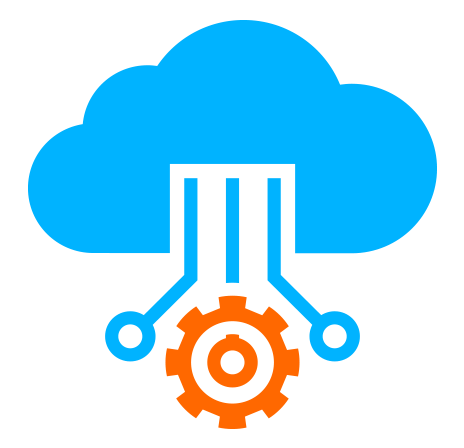 Server
Colocation
Server
Colocation
 CDN
Network
CDN
Network
 Linux Cloud
Hosting
Linux Cloud
Hosting
 VMware Public
Cloud
VMware Public
Cloud
 Multi-Cloud
Hosting
Multi-Cloud
Hosting
 Cloud
Server Hosting
Cloud
Server Hosting
 Kubernetes
Kubernetes
 API Gateway
API Gateway

By 2025, global data creation is expected to exceed 180 zettabytes, and for Indian enterprises, data growth is roughly 40% year over year. With remote work, IoT, video surveillance, AI/ML workloads, and compliance regulations driving massive storage needs, it's clear: understanding data storage costs isn’t optional—it’s essential. Smartly planned storage infrastructure lets businesses forecast IT expenses, avoid budget overruns, and maintain performance. This knowledge-based guide dives into the key drivers behind data storage costs, offering insights for both cloud and on-premises scenarios, while highlighting how regional solutions like Cyfuture Cloud can help optimize spending.
Few realize that storage expenditures can eat up 20–30% of total IT budgets. As data grows, costs follow—especially when retention spans years for compliance, or workloads involve heavy read/write operations. Without proper planning, even 'affordable' storage can become a financial burden. Here’s why:
Demand for multimedia, telemetry, and application data is exploding
Regulatory norms (like GDPR or RBI guidelines) require prolonged storage retention
Modern enterprises need performance and reliability, not just cheap space
Storing footage from thousands of CCTV cameras, keeping SaaS backups, or running ML pipelines—all add up quickly. So, how do you plan cost-effectively?
Whether you're buying disks or allocating volumes in the cloud, these variables determine your monthly storage bill:
Block Storage (SSD/HDD): Fast, for databases and VMs; costs ₹2–₹10/GB/month
Object Storage: Highly scalable—ideal for backups/media; ₹0.5–₹2/GB/month
File Storage: Shared NAS—used in collaborative environments; ₹1–₹5/GB/month
Hot (frequent access): Highest cost; used for live apps and real-time processing
Cool/Cold: For occasional access—cheaper but slower
Archive/Deep Archive: Very low cost, but slow retrieval
Single-site cheaper; multi-site (geo-redundant) adds up to 50% more
Backup copies + snapshots increase storage requirements
Frequent read/write, especially in cloud egress or API-heavy apps, can inflate costs quickly beyond raw storage.
Monitoring, encryption, backup automation, and compliance add incremental expense, especially on managed platforms.
Here's how the two compare at scale for a hypothetical 100 TB environment over 3 years:
Servers + disk & controllers: ₹25–₹35 million capex
Power, cooling, rack space, SAN/NAS: ₹5–10 million opex
Operations & maintenance: ₹3 million/year
Total ~₹40–50 million over 3 years
Object: ₹0.99/GB/month → ₹99,000
100 TB = ₹99,000 × 1,000 = ₹99 million/year
(In reality, discounts apply beyond certain TB.)
On-prem wins at scale—but cloud offers flexibility, faster deployment, no capex, and built-in redundancy. The best choice depends on your growth trajectory.
Step 1: Classify data
Frequently accessed (e.g., databases, website media) → SSD/block or hot object flag
Rarely accessed (archives, old backups) → cold/archive object tier
Step 2: Quantify data
Add weekly/monthly ingestion and retention horizon.
Step 3: Choose type and calculate
Use cloud calculator or local rates (e.g., ₹0.99/GB hot, ₹0.35/GB cold on Cyfuture).
Step 4: Add redundancy & egress
Multiply by 1.2–1.5 for replication, and add bandwidth costs for access.
Step 5: Add tools and support
Backups, encryption, monitoring, compliance—all increase monthly rates.
Tier data
Move older or infrequently used data to cheaper tiers automatically.
Lifecycle policies
Auto-delete or archive after set retention (e.g., 90 days).
Deduplication & compression
Aggressive settings can cut usage dramatically.
Right-size performance tiers
Don’t overpay for SSD when HDD suffices.
Monitor usage
Detect abandoned snapshots or ghost volumes.
Negotiate discounts
Commitment-based or bulk discounts with providers like Cyfuture Cloud.
INR-based transparent pricing (no surprises from USD fluctuations)
𝐇𝐨𝐭 Object storage at ₹0.99/GB, 𝐂𝐨𝐥𝐝 at ₹0.35/GB—among India’s most competitive
Regional data centers with low latency & compliance support
Scalable hybrid options, combining VPS, Block Storage, CDN, backup under one roof
Expert support helps craft lifecycle and tier strategies to reduce costs
|
Data Type |
Size |
Tier |
Cost/GB/Month |
Monthly Cost |
|
Active Files & Media |
5 TB |
Hot |
₹0.99 |
₹4,950 |
|
Backup Snapshots |
10 TB |
Cold |
₹0.35 |
₹3,500 |
|
Logging/Archive |
20 TB |
Cold |
₹0.35 |
₹7,000 |
|
Premium SSD Block (DB) |
2 TB |
SSD Block |
~₹3 |
₹6,000 |
|
Total Storage Cost ≈ ₹21,450/month |
Add redundancy (20%), egress charges, and extra services—your total IT budget could land near ₹30 k/month—yet with flexibility, visibility, and scalability baked in.
Data storage isn't just an operational cost—it’s a strategic investment. As your data grows, so should your financial forecasting. By understanding types of storage, lifecycle policies, and performance tiers, you can right-size your infrastructure and avoid surprise bills.
Cloud offers pay-as-you-grow, fast deployment, and reliability. On-prem at scale can be cost-effective—but carries maintenance overhead.
Solutions like Cyfuture Cloud offer smart regional pricing, tiered storage options, and expert cost guidance—helping you build scalable, cost-efficient cloud infrastructure.

Let’s talk about the future, and make it happen!
By continuing to use and navigate this website, you are agreeing to the use of cookies.
Find out more


